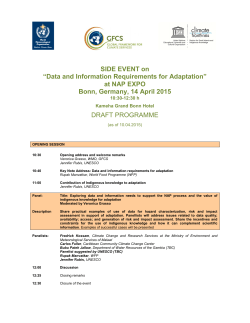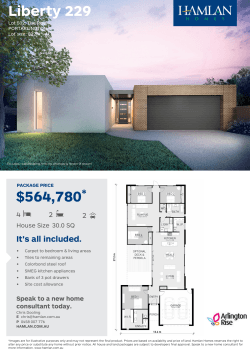
SUBNATIONAL LEVEL â WORKING WITH CITIES
WHO WE ARE? Low Carbon Resilient Development Program (LCRD) aims to support Colombian climate change efforts framed in the Low Carbon Development Strategy (ECDBC) and the National Adaptation Plan (NAP) at both the national and subnational level. The main objective of the program is to reinforce the process the country has already advanced in adaptation and mitigation, and provide the enabling conditions for the advancement of implementation actions and territorial planning processes. The program will address two interventions: The national scale in climate change policies and the subnational scale in the cities of Pasto and Riohacha to identify and implement mitigation and adaptation actions that become national examples. Common to both our national and subnational work, we identify and propose ways to monitor progress and impacts in terms of GHG emission reductions and avoidance, and increasing climate resilience for infrastructure and communities through a cross cutting area of MRV. SUBNATIONAL LEVEL – WORKING WITH CITIES TOP-BOTTOM APPROACH At the subnational level, the LCRD Program is working with a “bottom–up approach”, within a continuous improvement process. In a “top-bottom approach”, starting from a national scale, the implementation or the scale down process of the policies and/or guidelines in a specific territory, can have a different response in each case, due to the territory’s particularities. The LCRD Program is thinking in adaptation and mitigation alternatives with the potential to be replicable at a national level. The first step was to select the cities to work with; cities that fulfill the following criteria: identified climate change impacts; local government with a basic knowledge and willing to work with climate change topics; and, an ongoing process of land planning documents updating. The LCRD Program selected to work with the cities: Riohacha, and Pasto. BOTTOM-UP APPROACH WHAT HAVE WE DONE? RIOHACHA’S CASE RIOHACHA: Is the capital of the Guajira State, it is placed in the center of the state but its north-west boundary is the Caribbean Sea. Its average temperature is around of 28ºC; rainfall lower than 500mm/year; high values of sunlight and evaporation during the year. HOW DO WE WORK? The process started with a Rapid Vulnerability Assessment, based on historical data and an official documents review. The analysis was done on the perception of the city as a system, where the city is a conglomerate of elements, with interaction between them in order to bring the city into life. The most harmful Climate Stressors and the areas with the highest climate risk level were prioritized. Those areas must be characterized, taking into account its particularities; after that, the LCRD Program is going to propose an adaptation portfolio with alternatives that will face the identified risks in the selected areas. The LCRD Program is not trying to face just one specific problem in the selected area, many other secondary climate change effects could be faced, looking with that an increment of the adaptation capacity in the “city system”. Because of that, the portfolio will contain “systematic alternatives”, it means, alternatives where the selected area could be either, at the beginning, at the middle or at the end (in time and/or space) of the alternative. WHAT HAVE WE DONE IN RIOHACHA RVA RESULTS: The most recurrent climate stressors were analyzed. For each Climate Stressor the sensibility and the adaptation capacity were assessed in observation points placed within the municipality. The sensibility assessment was based on damage curves (relation between the percentage of expected damage and the land price). Taking into account the importance of the observation point in the city system, getting a sensibility coverage. The elements which can drive the adaptation capacity, such as economic resources, technological development, health In a participatory exercise, the RVA results were and education service overlapped with the climate change impact’s coverage, domestic perception. At the end two of them were selected public utility and the to analyze by the LCRD team: FLOODING IN government THE URBAN AREA AND DROUGHTS IN THE penetration, were evaluated, getting an RURAL AREA. adaptation capacity coverage as well. Taking into account the weight of each variable, sensibility Risk Assessments: Multi-stakeholder inputs were needed, and adaptation especially for Hazard Zoning. Those hazard maps were capacity were affected with the guidelines given by the Second National combined, getting a gave the Communication of Climate Change, which projection of temperature and Vulnerability precipitation based on the Assessment related to AR4. the specific climate stressors. 𝑅𝑖𝑠𝑘 = 𝑓(𝑉𝑢𝑙𝑛𝑒𝑟𝑎𝑏𝑖𝑙𝑖𝑡𝑦 𝑜𝑓 𝑒𝑥𝑝𝑜𝑠𝑒𝑑 𝑒𝑙𝑒𝑚𝑒𝑛𝑡𝑠, 𝐻𝑎𝑧𝑎𝑟𝑑) The High Risk Areas were delimited. In a second participatory workshop, the economic, social, cultural and ecological importance of those areas, were analyzed; as result, the areas that provide more services to the system were selected: SALADA LAKE IN THE URBAN AREA AND THE MEDIUM BASIN OF THE TAPIAS RIVER IN THE RURAL AREA. LCRD TEAM Sandra Garavito Chief of Party Ana María Mogollón Technical Advisor Ernesto Betancourt Cities Coordinator The ongoing activities in Riohacha are oriented to know the state of art of the intervention areas, taking into account the political, economic, social and cultural background of the city itself. Juan Felipe Franco MRV Coordinator Sebastian Velasquez Transport Team Coordinator Carolina Hernández Ministry of Housing, City and Territory Consultant Flooding Riohacha’s hints: The Salada Lake was part of a series of lakes connected by a green corridor, but now, that corridor does not exist, due to the urban expansion. The Salada Lake was once connected to a mangrove next to it, but a national highway was built over that connection, and now, a box culvert is trying to keep that connection. The control of the protected areas around the lake is not effective, illegal suburbs are placed on those areas. The environmental regional agency is working in a process of wetlands delimitation. The storm sewer system in the city has a coverage close to 10%, and almost the 85% of the urban runoff water goes directly to the Salada Lake. The municipality has a precipitation deficit, close to 80%, it means, 9 months without rain events Andrea Maldonado Ministry of Housing, City and TerritorySanitation Sector Consultant Andrés Martínez Ministry of Commerce, Industry and Tourism Consultant Claudia Díaz Ministry of Transportation Consultant Andrés Peña Ministry of Transportation Consultant Oscar Galvis Urban Risk Expert and Adaptation Specialist Beatriz Mogollón Climate Change and Natural Resources Specialist Juan Pablo Borda Renewable Energy Expert Sonia Borja Hydrology Consultant Patricia Dávila MRV Consultant Ivonne Ayala Administrative and Financial Support Specialist Lina María Rueda Communication Specialist
© Copyright 2025










